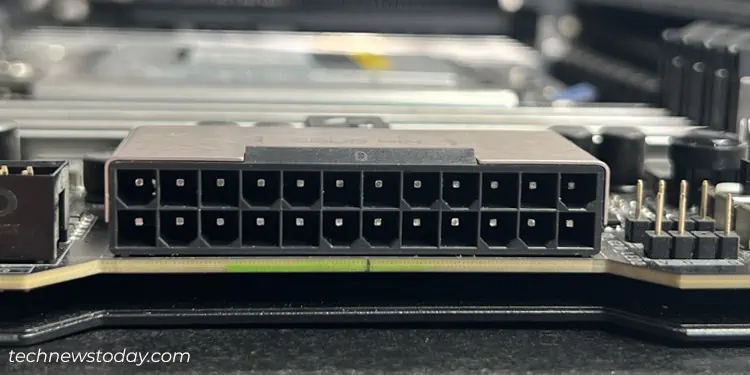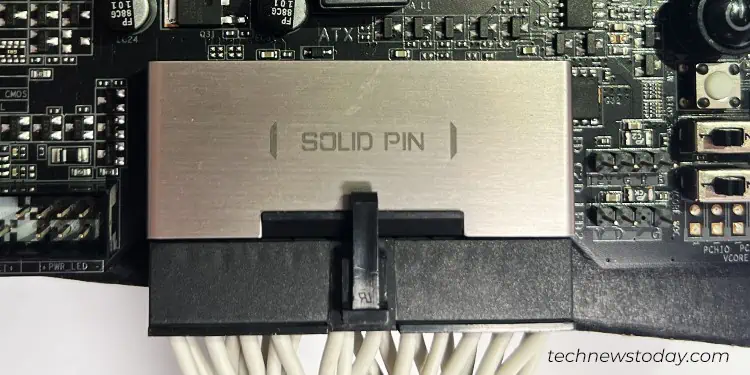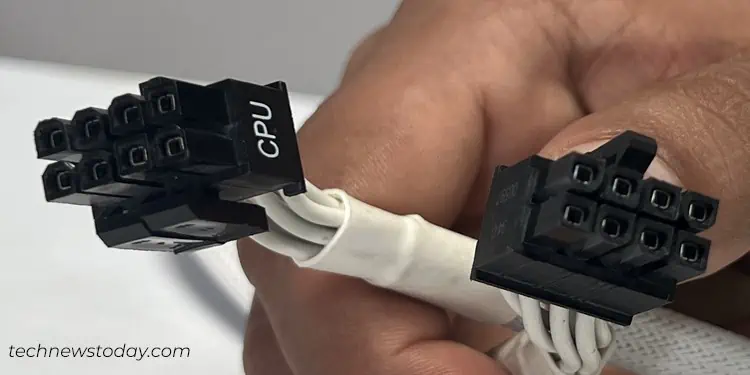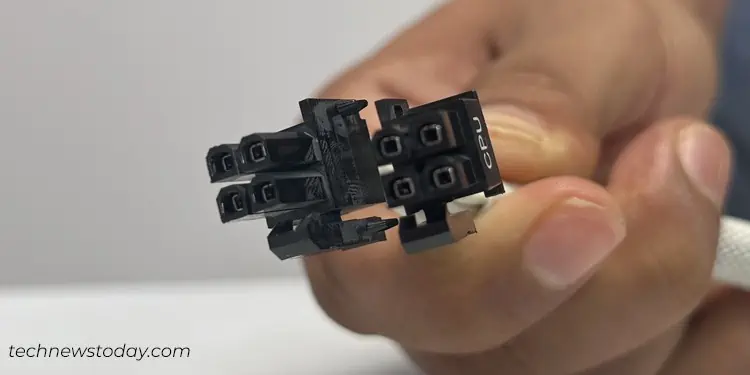Whenever you are installing a PSU, you might feel a bit overwhelmed by a bunch of cables emerging out of it. Plus, the design of the connectors look so similar that it’s hard to figure out which one goes where.
It is always crucial to be familiar with the power supply connectors toensure stable and efficient power deliveryto each of the PC components. Although the available connectors vary depending upon your PSU model and manufacturer, there are some common ones you’ll always find.
In this article, I’ll be discussing theATX power connectorthat supplies power to your main board and theCPU power connectorthat gives power to the CPU. Besides, you’ll also learn how thePCIeandSATA connectorspower up your GPU and storage disks respectively. By the end, you’ll also get some insights on aMolex connector, which is, however, quite less used these days.
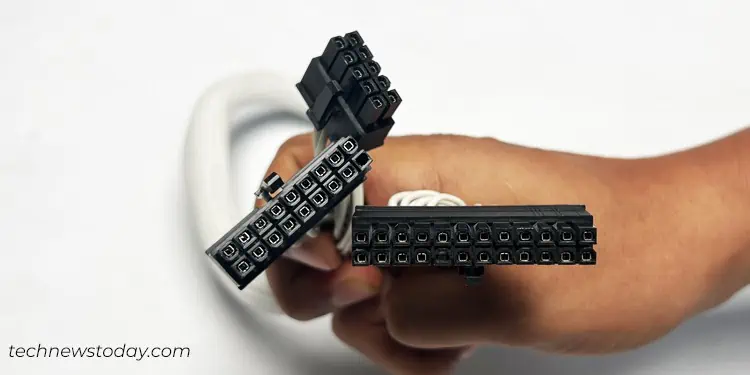
24 Pin ATX Power Connector
It is the largest connector on a PSU thatsupplies power to the main board, including RAM, chipsets, and onboard storage devices (like aNVMe SSD.)
If you observe these connectors closely, you will find that it has24 pins arranged in 2 rows, 12 on each.
For instance, you may see the ATX power connector that came with myCORSAIR RM850XPSU. It can be easily plugged into the motherboard that has a 24-pin ATX header.
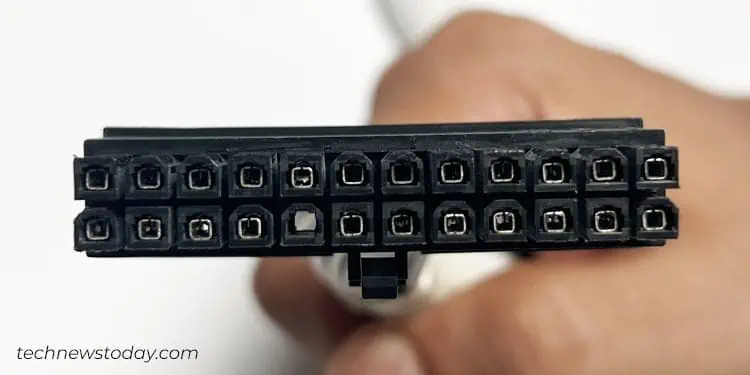
However, you may also find some connectors that are divided into two blocks of 20 pins and 4 pins. The(20+4) pin setupwas introduced for enhanced compatibility, allowing you to utilize the same connector regardless of the pin setup on your main board.
For instance, if you have an older motherboard with a 20-pin ATX header, you may simply attach the 20 pins block and let go of the four pins block.
Coming to the PSU side, you will see a “24PIN ATX” label to connect the ATX power connector. However, the ATX port on the PSU may not always have a 24-pin setup.
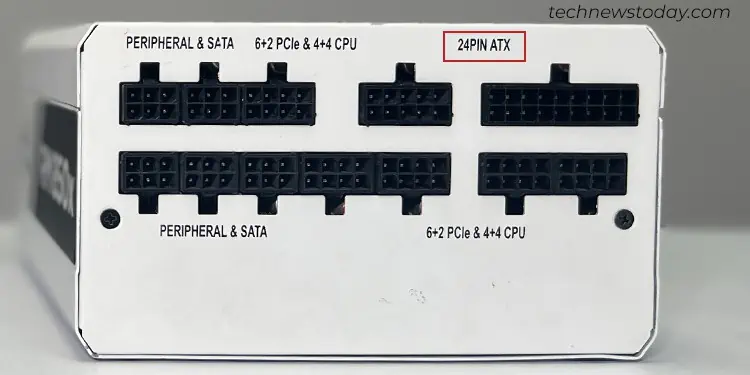
For instance, myCORSAIR RM850XPSU has a 28-pin configuration, in a set of (18+10.) The additional 4 pins are integrated to sense voltage drop in the component end, if any, and report it back to the PSU.
Now that you know the basics of an ATX power connector, let me show you how to connect it to your main board.
TheATX headeris generally found in the rightmost part of a motherboard, usually with anATXorATX_PWR1label. Below is my ATX header on aGIGABYTE TRX40 AORUS MASTER.
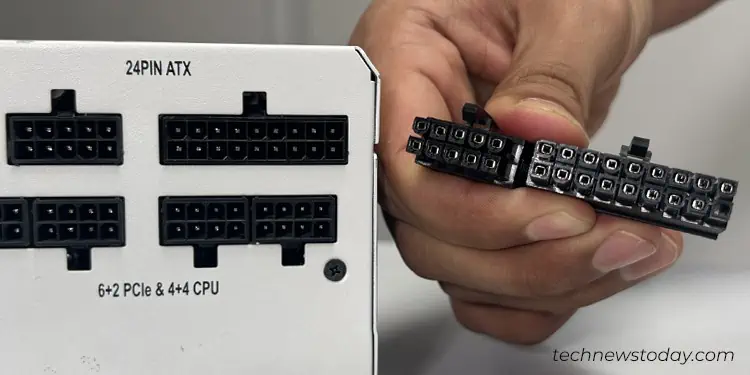
you may simply locate it on your board and plug in the connector. For simplifying the connection process, the connectors are notched and keyed one side, making it almost impossible to insert the cable incorrectly.
12V CPU Power Connector
